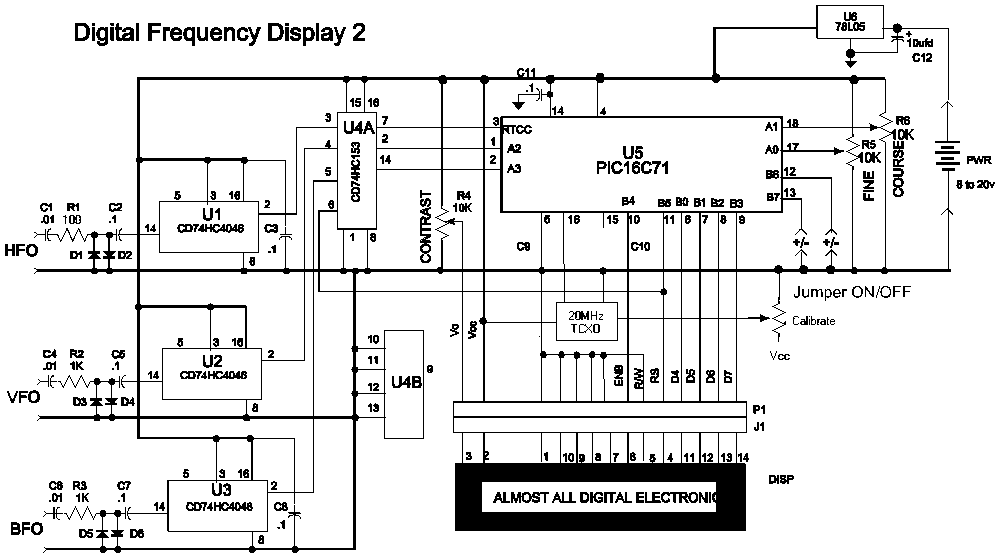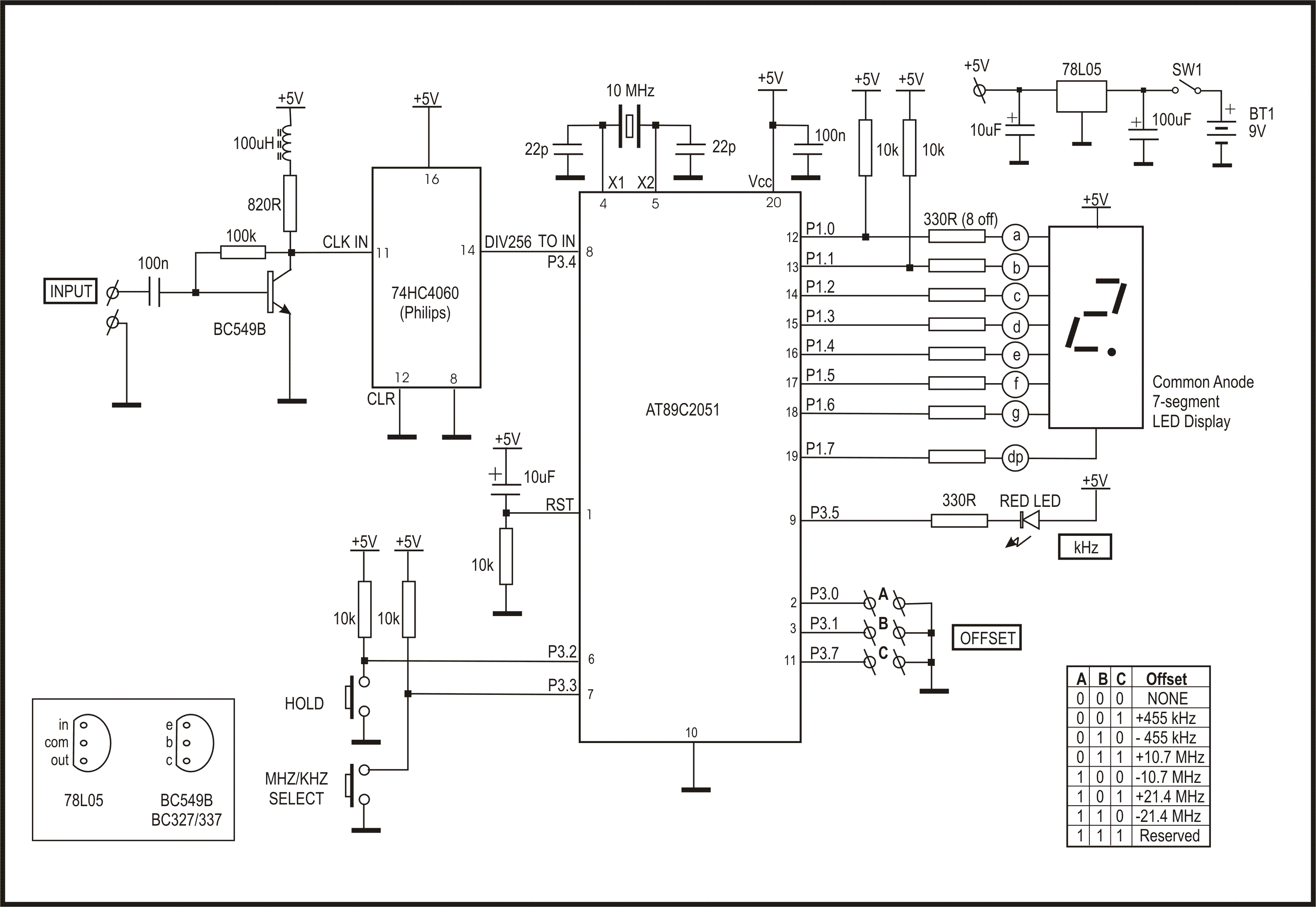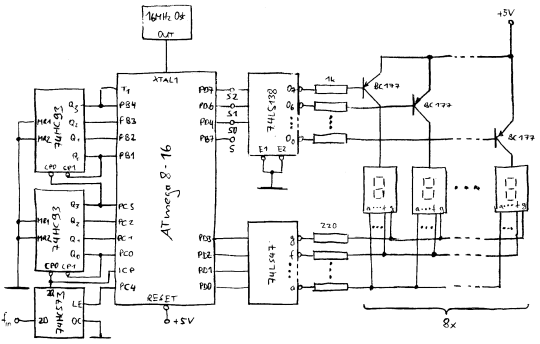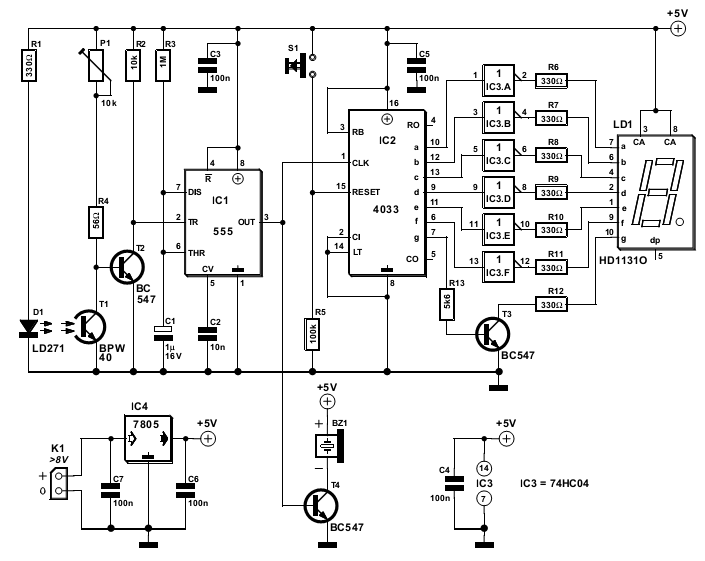
Vibration Impulse Counter
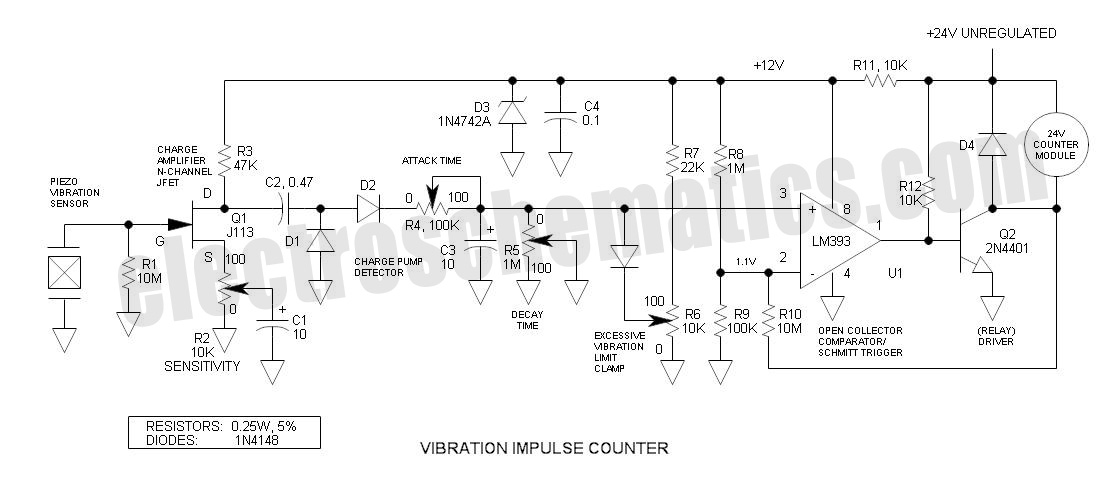
This is an adaptation of the previously posted bicycle anti-theft alarm. A commenter expressed interest in modifying it for use with a threshold step plate vibration detector.
The adaptation of a bicycle anti-theft alarm into a threshold step plate vibration detector involves several key components and design considerations. The primary function of this device is to detect vibrations caused by unauthorized access or movement across a designated area, such as a threshold plate at the entrance of a building.
The circuit typically includes a vibration sensor, which can be a piezoelectric sensor or an accelerometer. This sensor detects vibrations and converts them into an electrical signal. The output from the sensor is then fed into a microcontroller or a comparator circuit that processes the signal to determine if it exceeds a predefined threshold level indicative of tampering or intrusion.
To enhance the functionality of the vibration detector, a programmable microcontroller can be employed. This microcontroller can be programmed to adjust the sensitivity of the sensor, allowing for customization based on the specific environment where the device will be deployed. Additionally, the microcontroller can trigger an alarm or notification system when vibrations above the threshold are detected, such as activating a buzzer or sending a signal to a mobile device.
Power supply considerations are crucial for ensuring the reliability of the device. Options include battery power for portability or a direct AC connection for permanent installations. Power management circuits may also be implemented to extend battery life if a battery-operated solution is chosen.
For installation, the threshold step plate must be securely mounted to ensure that the vibration sensor is correctly positioned to detect disturbances. The circuit can be housed in a weatherproof enclosure if it is intended for outdoor use, protecting the electronic components from environmental factors.
In summary, adapting a bicycle anti-theft alarm for use as a threshold step plate vibration detector involves integrating a vibration sensor with a processing unit, alarm system, and appropriate power management while ensuring secure and reliable installation.This is a take off from the previously posted bicycle anti-theft alarm. One commenter indicated a desire to adapt it to a threshold step plate vibration de.. 🔗 External reference
The adaptation of a bicycle anti-theft alarm into a threshold step plate vibration detector involves several key components and design considerations. The primary function of this device is to detect vibrations caused by unauthorized access or movement across a designated area, such as a threshold plate at the entrance of a building.
The circuit typically includes a vibration sensor, which can be a piezoelectric sensor or an accelerometer. This sensor detects vibrations and converts them into an electrical signal. The output from the sensor is then fed into a microcontroller or a comparator circuit that processes the signal to determine if it exceeds a predefined threshold level indicative of tampering or intrusion.
To enhance the functionality of the vibration detector, a programmable microcontroller can be employed. This microcontroller can be programmed to adjust the sensitivity of the sensor, allowing for customization based on the specific environment where the device will be deployed. Additionally, the microcontroller can trigger an alarm or notification system when vibrations above the threshold are detected, such as activating a buzzer or sending a signal to a mobile device.
Power supply considerations are crucial for ensuring the reliability of the device. Options include battery power for portability or a direct AC connection for permanent installations. Power management circuits may also be implemented to extend battery life if a battery-operated solution is chosen.
For installation, the threshold step plate must be securely mounted to ensure that the vibration sensor is correctly positioned to detect disturbances. The circuit can be housed in a weatherproof enclosure if it is intended for outdoor use, protecting the electronic components from environmental factors.
In summary, adapting a bicycle anti-theft alarm for use as a threshold step plate vibration detector involves integrating a vibration sensor with a processing unit, alarm system, and appropriate power management while ensuring secure and reliable installation.This is a take off from the previously posted bicycle anti-theft alarm. One commenter indicated a desire to adapt it to a threshold step plate vibration de.. 🔗 External reference
